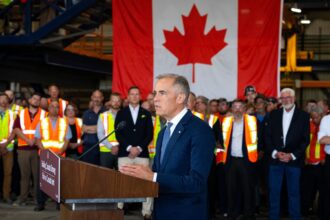The landscape of international education in Canada stands at a critical turning point as 2024 unfolds, with federal and provincial governments executing a dramatic policy pivot that has sent ripples throughout the country’s once-booming education sector. What began as a carefully cultivated ecosystem designed to attract global talent has transformed into a contentious battleground over housing affordability, institutional integrity, and the true value of educational migration.
“We’re witnessing the most significant recalibration of international education policy in two decades,” notes Dr. Elaine Thompson, Director of Immigration Studies at the University of Toronto. “This isn’t simply about numbers—it’s about fundamentally reassessing what role international students should play in Canada’s future.”
The federal government’s January announcement slashing study permits by 35% for 2024 marked only the beginning of a comprehensive strategy shift. Provincial governments have followed suit, with Ontario implementing stringent financial requirements for prospective students while British Columbia has suspended applications to certain private colleges entirely. These coordinated actions reflect growing concerns that the system had evolved beyond its original educational mission.
At the heart of this policy reformation lies a complex reality: international students contributed an estimated $22.3 billion to Canada’s economy in 2023 according to Statistics Canada data, while simultaneously being blamed for exacerbating the country’s housing crisis. The controversy intensified when Immigration Minister Marc Miller publicly questioned whether some institutions were operating as diploma mills, suggesting that educational quality had been sacrificed for financial gain.
For university administrators, these accusations strike at the core of institutional reputation. “Canadian higher education has built its global brand on quality and integrity,” argues William Chen, President of the Canadian Association of University Teachers. “The challenge now is distinguishing between legitimate concerns and scapegoating an entire student population for broader systemic issues.”
Beyond the ivory towers, the policy shift has real-world implications for communities across Canada. In Waterloo, Ontario, real estate developer MarshCorp announced the suspension of three student housing projects following the announcement, citing “uncertainty in the student housing market.” Meanwhile, in Halifax, restaurant owner Janice McKay worries about losing the international student workforce that has become essential to her business operations.
“This isn’t just about universities or colleges,” McKay explains. “These students have become integral parts of our communities and economy. When policy changes this dramatically, the ripple effects touch everything from housing to local businesses to cultural diversity.”
The policy recalibration represents a delicate balancing act for Canadian officials navigating competing priorities in business and politics. While addressing legitimate concerns about institutional quality and housing pressure, they must avoid undermining Canada’s reputation as a welcoming destination for global talent.
Some experts suggest the current approach may prove shortsighted. Dr. Raymond Wong of the Canadian Economic Institute points to demographic projections showing Canada’s aging workforce will require significant immigration to maintain economic growth. “International students represent the ideal immigrants—they’re young, educated in our system, familiar with our culture, and ready to contribute. Cutting their numbers may solve short-term political problems while creating long-term economic ones.”
As provincial education ministers prepare to meet with federal counterparts next month to establish new frameworks for international education, the fundamental question remains unanswered: Can Canada develop a sustainable model that balances educational integrity, economic benefits, and community impact? The answer will shape not just the future of Canadian education, but potentially the country’s position in an increasingly competitive global knowledge economy.







